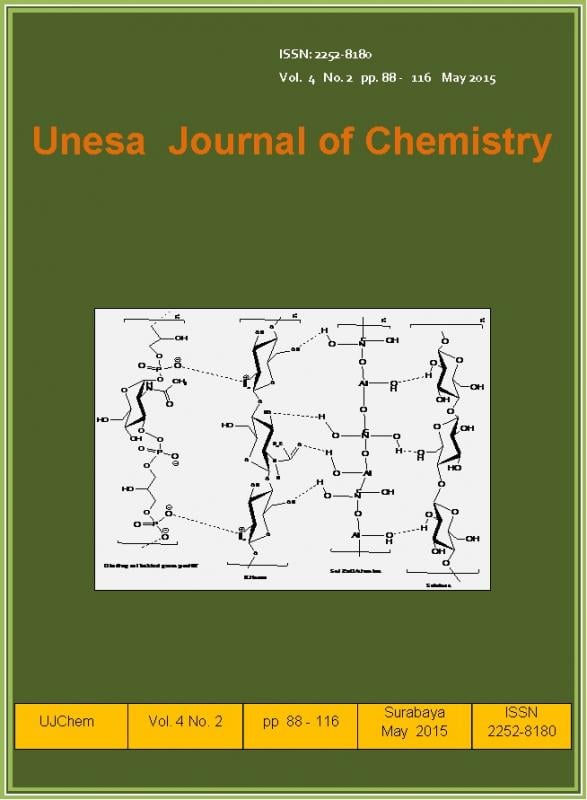OPTIMASI PROSES REDUKSI KLORAMFENIKOL MENGGUNAKAN REDUKTOR Zn DENGAN SPEKTROFOTOMETRI UV-Vis OPTIMIZATION OF CHLORAMPHENICOL REDUCTION USING Zn AS REDUCTOR BY SPECTROPHOTOMETRY UV-Vis
Main Article Content
Abstract
Abstrak. Penelitian tentang optimasi proses reduksi kloramfenikol menggunakan reduktor Zn dengan Spektrofotometri UV-Vis dan Fourier Transformed Infra Red (FTIR) telah dilakukan. Tujuan penelitian ini adalah mengubah gugus nitro aromatic pada kloramfenikol menjadi gugus amina primer yang diikuti proses diazotasi dan pengkopling menggunakan N-(1-Naphtyl)ethylendiamine dihydrochloride (NEDA) sebagai pengkopling. Hasil akhir penelitian ini adalah terbentuknya senyawa azo yang dapat diukur pada panjang gelombang 560-568 nm. Senyawa ini stabil apabila proses reduksi dilakukan pada temperatur di bawah 10oC. Kondisi optimum proses reduksi dapat diperoleh dengan mereduksi 100 ppm kloramfenikol menggunakan 3 gram Zn dalam 2,5 ml asam format.
Kata kunci: kloramfenikol, reduktor Zn, diazotasi, spektrofotometri, NEDA.
Abstract. Research about optimization of chloramphenicol reduction process using zinc (Zn) as reductor by Spectrophotometry UV-Vis and Fourier Transformed Infra Red (FTIR) has been conducted. The purpose of this research is to convert the nitro aromatic group in chloramphenicol into primary amine group followed by diazotization and coupling process using N-(1-Naphtyl)ethylendiamine dihydrochloride (NEDA) as a coupling agent. The final result of this research is the formation of azo compound measured at 560-568 nm. This compound is stable when the reduction process is conducted at temperature below 10oC. The optimum condition of the reduction process can be obtained by reducting 100 ppm of chloramphenicol using 3 gram of Zn in 2.5 ml of formic acid.
Keywords: chloramphenicol, reductor Zn, diazotization, spectrophotometry, NEDA.

